EMG Italy
- EMG Global
EMG Countries
- EMG Belgium
- EMG France
- EMG Germany
- EMG Netherlands
- EMG USA
- EMG United Kingdom
EMG Brands
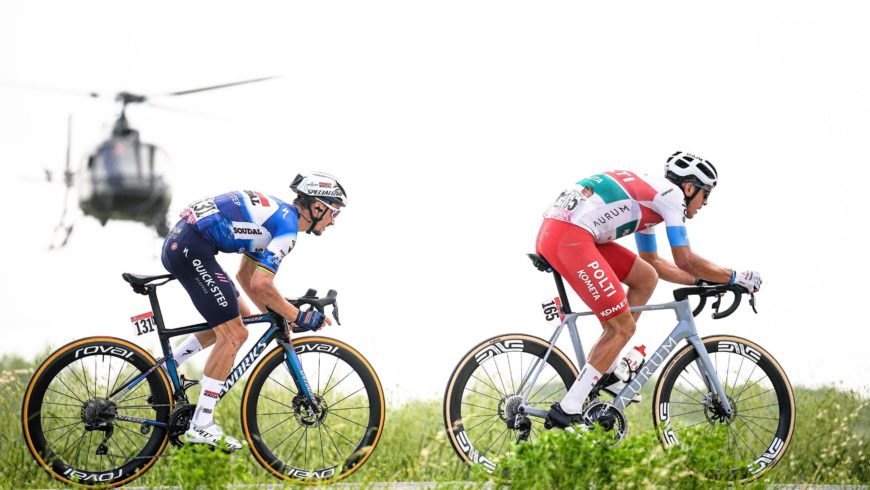
THE INTERNATIONAL TV PRODUCTION OF THE RACE IS ONE THE MOST COMPLEX LIVE EVENT TO DELIVER
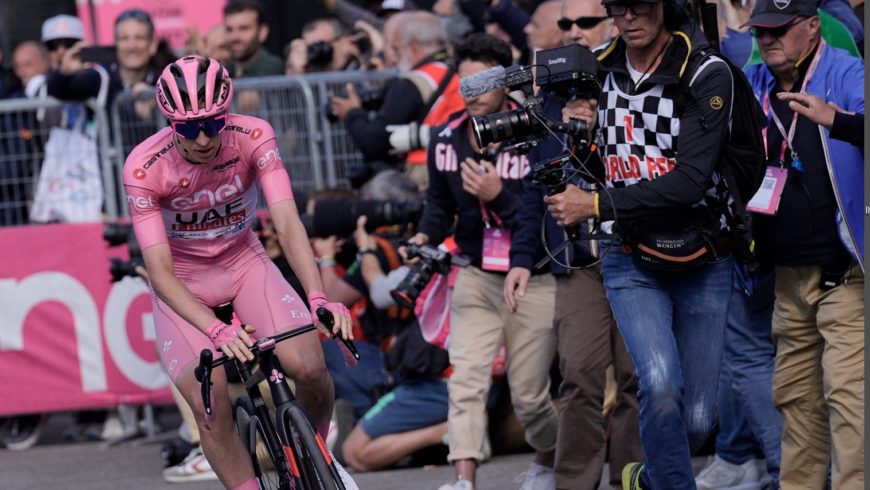
The Giro d'Italia, often dubbed "the toughest race in the world, in the most beautiful country in the world," is one of cycling's Grand Tours alongside the Tour de France and the Vuelta a España. Just like the race itself, the operation of bringing the Giro d'Italia into the homes of television viewers worldwide is a complex and massive undertaking. An intricate network of personnel and equipment comes together to produce the international broadcast signal for the Giro, which spans 3,404.8 km across Italy in 21 stages. This year, EMG/Gravity Media orchestrated the entire operation,commencing on May 4th and culminating in Rome on May 26th.
Television Production: A Collaborative Effort
RCS Sport, the event organizer, entrusted EMG Italy with the entire television production for the third consecutive year.Beyond the international live feed of the race, the CLEAN signal for the national broadcaster (RAI) and the Clean Clean signal for Eurosport distribution, daily highlights, news feeds, a weekly magazine, and social media content were also produced, with a total of 60 embedded ISO video and audio signals distributed.

The production team faced numerous challenges, including managing a crew of over 120 people who traveled from one stage to the next each day and transporting the TV compound, which consisted of regia vehicles and support vehicles for graphics and connectivity. Maintaining signal transmission throughout the entire race route was one of the most demanding tasks, requiring 10 motorcycles, 2 helicopters, an aerial repeater system at 6,500 meters to receive and retransmit audio and video signals to intermediate signal reception/distribution points and satellites. Another challenge involved laying and protecting cables in historic city centers - approximately 45 km of fiber and copper cables that had to be protected and retrieved at the end of each stage - running from the regias to the cameras positioned at the starts and finishes.
The graphics package, entirely provided by EMG Italy's specialized graphics department, Boost Graphics, incorporated real-time race statistics with precise timekeeping information to determine the riders' standings.
Technical Details in Brief:
Continuous Refinement for an Enhanced Viewing Experience
Each year, considering the immense popularity of the Corsa Rosa in Italy and worldwide, the production is refined, also from a technical standpoint, to offer viewers and fans an increasingly content-rich experience.
Among the most notable innovations in this edition was the use of pixel tracking graphics, a system that leverages GPS data tracking technology and artificial intelligence. This system, already successfully employed in other international cycling races, was used for the first time in Italy. It allowed for real-time tracking of riders and the display of useful information such as their position in the standings, elapsed time, and distance to the finish line. Additionally, aerial footage enabled viewers to follow each rider visually along the route, providing an even more comprehensive and engaging view of the race.

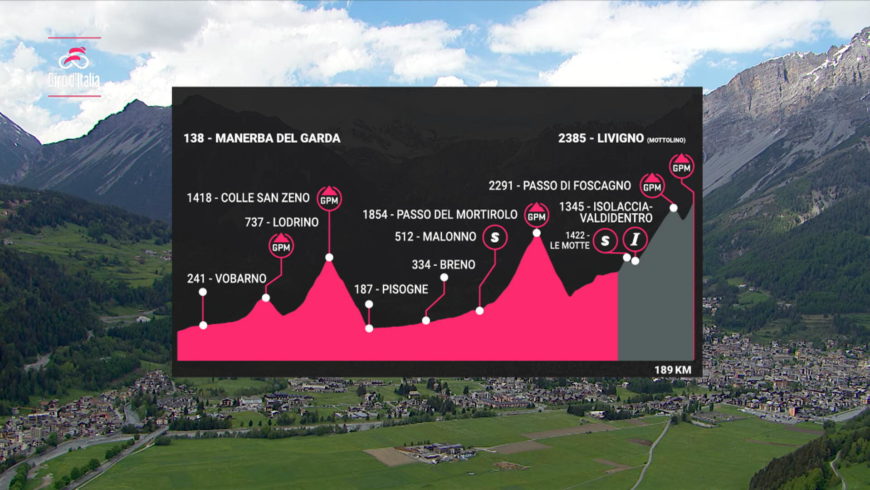

A Complex Machine Behind the Spectacle
Behind the spectacular Giro images we enjoy from the comfort of our homes lies an incredibly complex organizational machine, the heart of which is the TV compound. Here, approximately 15 regia vehicles gather, dedicated to the host broadcaster feed of the race and an equal number for television broadcasters seeking to integrate international images with their own footage.
RAI plays a significant role in this operation, being the only broadcaster with a true mobile television studio on site,complete with five cameras and four motorcycles provided by EMG. These motorcycles carry journalists for live reporting from the race. Eurosport, on the other hand, has a camera at the finish line with a reporter for interviews and a journalist on board a motorcycle who provides live commentary along the route, coordinated by the Paris video center.

The EMG/Gravity Media group, responsible for bringing the Giro d'Italia to cycling enthusiasts worldwide, divided the roles within the group's countries as follows:
EMG Italy:
EMG Connectivity:
EMG Belgium + EMG France:
EMG Netherlands:
Boost Graphics:
Aerial Camera Systems (ACS):


Long daily live broadcasts
The total duration of the live broadcast, which varies in length depending on the stage and weather conditions, averages six to seven hours each day. The international feed produced by EMG starts 30 minutes before the start of the race and continues for 45 minutes after the stage winner's finish, including the daily jersey presentation ceremonies.
A major challenge is to ensure smooth coverage for areas not directly connected by cable or fiber. For this purpose, state-of-the-art and proprietary wireless transmission systems are used. Once the live broadcast is over, EMG Italy also plays an important role in the production of highlights, using two Avid editing stations connected to the EVS network to create daily clips and a weekly magazine.
Andrea Basso, Head of TV productions and media rights for RCS Sport events, says: "This year we have chosen a Dutch director and assistant director, Koen Van Mourik and Tjarko Stikkers, who we already know well because we have already worked with them on some editions of the Tour of the United Arab Emirates. They are used to working together, are very synchronized and have an even fresher and more dynamic vision of the race. In their coverage of the Giro, they used the new graphics package created by Boost Graphics much more than in the past.
With each edition, we have always tried to improve, so we have constantly worked on small and large details of the production and introduced improvements that guarantee a television product of ever higher quality. I can also say that the "core operating group" that EMG Italy has placed on the Giro project has grown a lot and today we can certainly boast a specific expertise that has been refined over the years of working together. RCS Sport has also invested a lot in the "storytelling of the territory", selecting the points of interest that are regularly provided to the team of aerial cameramen and enhanced during each stage".
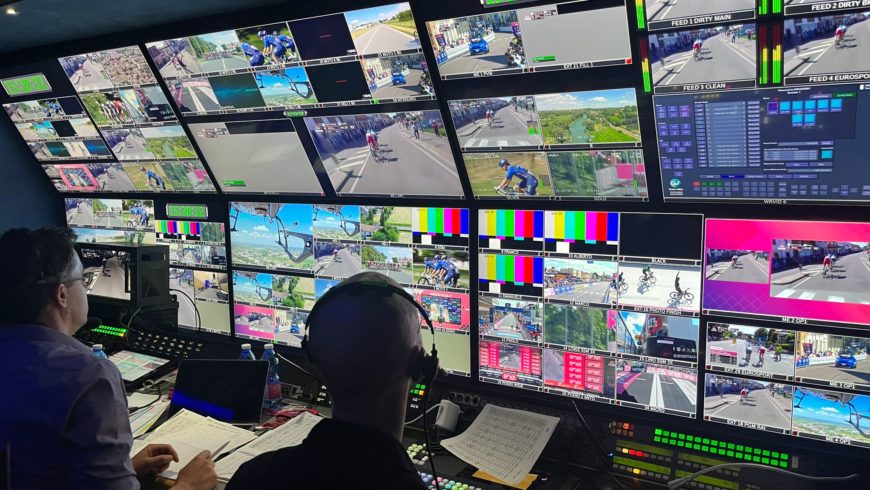
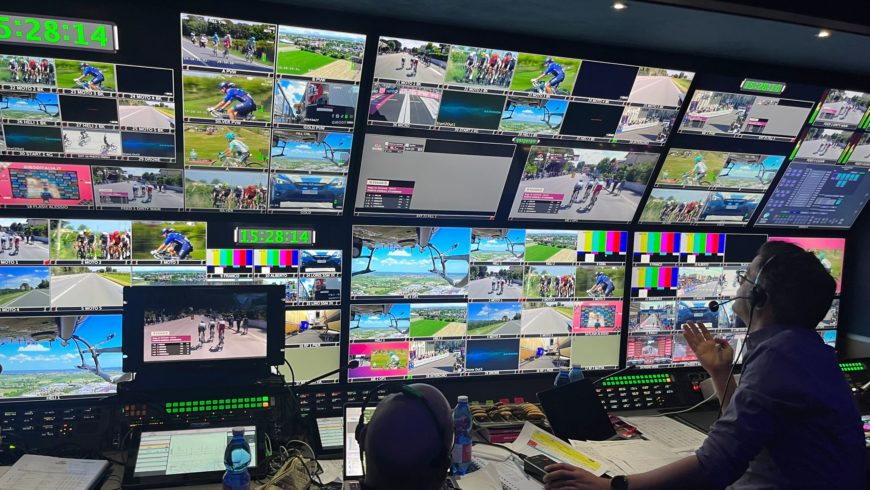
The Director's Perspective: Koen Van Mourik's Insights
Koen Van Mourik, the director, expresses his enthusiasm for the project, stating, "It was a very exciting job!" He acknowledges the Giro's reputation as a grand spectacle and the aptness of its title, "the toughest race in the world, in the most beautiful country in the world. It was a great opportunity to work again with Tjarko Stikkers and the international team that EMG has made available.
The team is truly highly qualified in every segment of production and is multilingual, spanning English, French, Dutch and... a few words of Italian. Overall, the event was very well prepared from the beginning of the season and then a camera plan was used on each stage that we confirmed on site before the start. Obviously, there are always small operational aspects that we cannot foresee before each stage and we are forced to make changes at the last minute.For example, we are often not sure of having the space we would like for camera placement and sometimes we have to compromise and adapt to the actual conditions, solving with small changes compared to the original plan.
In general, we always have a large pre-production meeting where we explain to the operators what we want to achieve and what we expect from them. Then we discuss the small daily adjustments to the story and emphasize the focus we want to narrate before each stage and on that specific day."

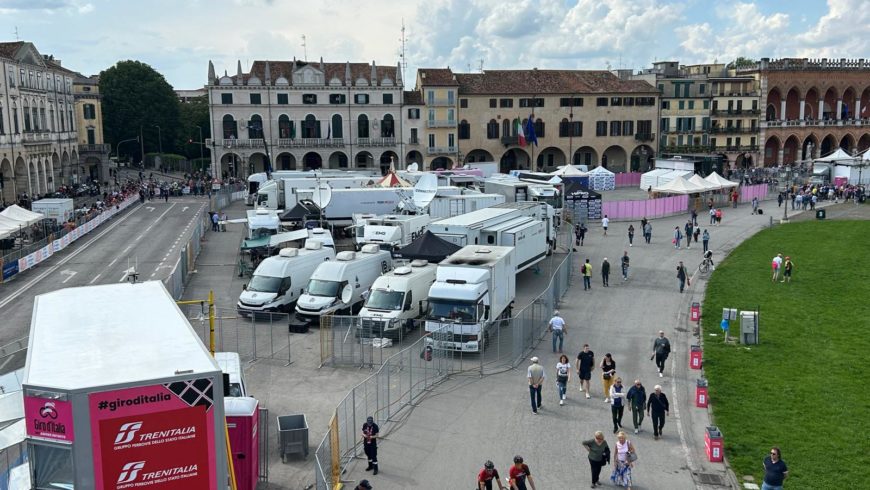
The technology involved
"From a technological point of view," Koen Van Mourik continues, "we have extended the use of drones, following the trend in other cycling races where aerial shots certainly allow for greater spectacle, especially in some of the more difficult stages to follow."
The use of drones had already been inaugurated by EMG Italy in the previous edition during the Tarvisio-Lussari stage,but in 2024 their use was significantly expanded due to the excellent perspective they allow, for example in mountain stages.
Koen Van Mourik confirms: "What we have tried to do is to bring together different elements that can better tell the story and entertain the viewer as much as possible. We are, in fact, aware that cycling can sometimes be monotonous; therefore,we have combined spectacular images of the beauty of the places, and have accompanied them as much as possible with sports data, statistics and graphics. In addition, we have reused a particular effect, a kind of zoom-in on some details of the image following a practice that was already used in the past. For a number of years this "effect" has not been used anymore but we have reintroduced it with great satisfaction: for example in the second stage there was a broken bike that we were able to document in detail,really managing to get into the details of the story."
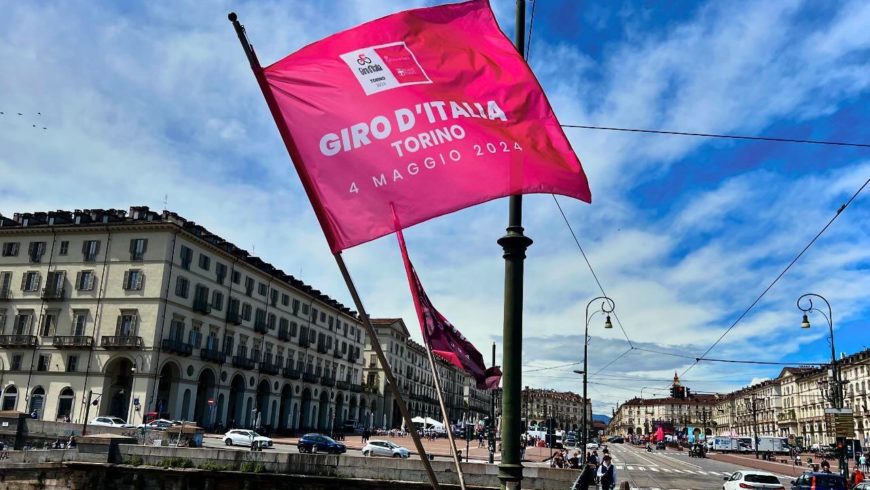

Cycling is definitely a sport where it is really possible to integrate many "collateral" elements into the narration of the competition itself.
In the storytelling of this sport, the figure of the director is fundamental in determining the pace at which the spectator enjoys the show and experiences the event. This can certainly be done to a greater extent than in other sports, such as football, where the main camera must necessarily follow the ball. Here there is much more freedom.
Koen Van Mourik nods: "Mine is a good job, because I have a lot of freedom of expression: in fact, even if the race itself is certainly and always the main focus of the narrative, as a director I can continually choose and decide what to propose and really add impactful visual elements. In practice, the direction must find the right mix of technical information and spectacular storytelling.
When asked about what could be interesting to improve, I think I can answer that, although the new graphics package that also includes the tracking implemented this year has been really very valid, I believe that it is precisely in this direction that we can raise the bar even further and involve the data even more, in future editions. In addition, for the first time we have used a second stabilized camera, connected in RF, at the start/finish line that works at high speed and describes mainly the start phases. I believe that, always to develop the level of authorial creativity, precisely thanks to these cameras we could increase, in the future, the clips that describe what happens before and after the race and propose more images taken from motorcycles in super slow motion. In addition, capturing as much as possible the excitement of the fans on the roads would add an extra dimension to the beauty of the race and the show”.
The director's final comment: "It was great working with the truly international team put together by EMG Italy and RCS for this great event, which brought together so many specialists from so many parts of Europe. The excellent organization of everything allowed everyone to really give their best in every segment of the production, to create a performance at the highest level."
###
© 2024 EMG Italy - Presspool PressOffice RobertoLandini
Do you have questions or need information? Fill in your contact details and we'll contact you as soon as possible!
"*" indicates required fields